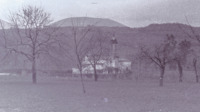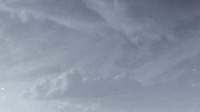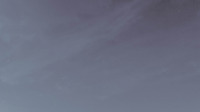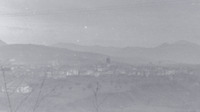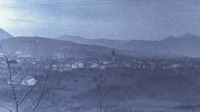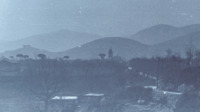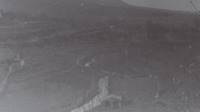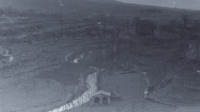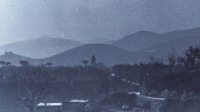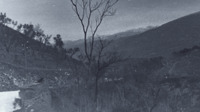
Browse Items (8239 total)
Sort by:
-
Along Road Madaloni-Aureola.
Photograph number 505. This photograph shows the view from the road between Maddaloni, Italy, which at the time was located in the Province of Caserta but now is in the Province of Forsinone, and Airola, Italy, located in the Province of Benevento. There is what appears to be a church building. The title for this image was found in Major Edwin D. Burwell Jr.'s list of photographs. -
Along Road Madaloni-Aureola.
Photograph number 506. This photograph shows clouds from the road between Maddaloni, Italy, which at the time was located in the Province of Caserta but now is in the Province of Forsinone, and Airola, Italy, located in the Province of Benevento. The title for this image was found in Major Edwin D. Burwell Jr.'s list of photographs. -
Along Road Madaloni-Aureola.
Photograph number 507. This photograph shows clouds from the road between Maddaloni, Italy, which at the time was located in the Province of Caserta but now is in the Province of Forsinone, and Airola, Italy, located in the Province of Benevento. The title for this image was found in Major Edwin D. Burwell Jr.'s list of photographs. -
Along Road Madaloni-Aureola.
Photograph number 508. This photograph shows the view from the road between Maddaloni, Italy, which at the time was located in the Province of Caserta but now is in the Province of Forsinone, and Airola, Italy, located in the Province of Benevento. The title for this image was found in Major Edwin D. Burwell Jr.'s list of photographs. -
Along Road Madaloni-Aureola.
Photograph number 509. This photograph shows the view from the road between Maddaloni, Italy, which at the time was located in the Province of Caserta but now is in the Province of Forsinone, and Airola, Italy, located in the Province of Benevento. The title for this image was found in Major Edwin D. Burwell Jr.'s list of photographs. -
Along Road Madaloni-Aureola.
Photograph number 510. This photograph shows the view from the road between Maddaloni, Italy, which at the time was located in the Province of Caserta but now is in the Province of Forsinone, and Airola, Italy, located in the Province of Benevento. The title for this image was found in Major Edwin D. Burwell Jr.'s list of photographs. -
Along Road Madaloni-Aureola.
Photograph number 511. This photograph shows the view from the road between Maddaloni, Italy, which at the time was located in the Province of Caserta but now is in the Province of Forsinone, and Airola, Italy, located in the Province of Benevento. The title for this image was found in Major Edwin D. Burwell Jr.'s list of photographs. -
Along Road Madaloni-Aureola.
Photograph number 512. This photograph shows the view from the road between Maddaloni, Italy, which at the time was located in the Province of Caserta but now is in the Province of Forsinone, and Airola, Italy, located in the Province of Benevento. The title for this image was found in Major Edwin D. Burwell Jr.'s list of photographs. -
Along Road Madaloni-Aureola.
Photograph number 513. This photograph shows the view from the road between Maddaloni, Italy, which at the time was located in the Province of Caserta but now is in the Province of Forsinone, and Airola, Italy, located in the Province of Benevento. The title for this image was found in Major Edwin D. Burwell Jr.'s list of photographs. -
Along Road Madaloni-Aureola.
Photograph number 514. This photograph shows the view from the road between Maddaloni, Italy, which at the time was located in the Province of Caserta but now is in the Province of Forsinone, and Airola, Italy, located in the Province of Benevento. The title for this image was found in Major Edwin D. Burwell Jr.'s list of photographs.
